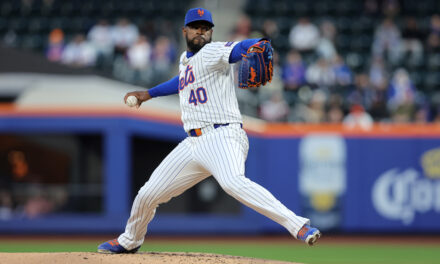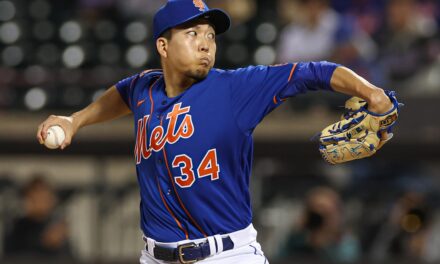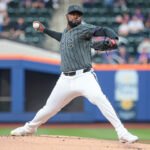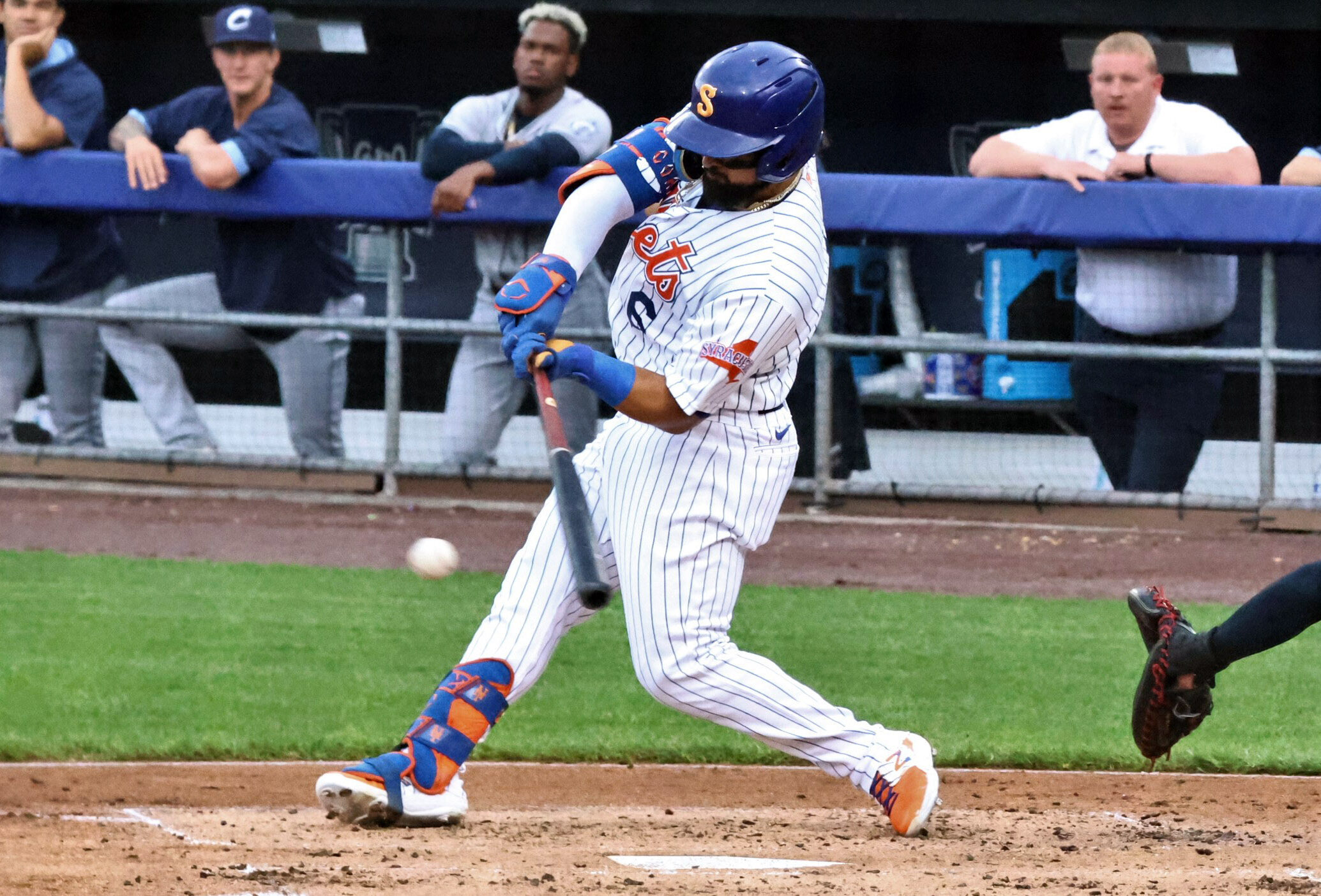
Carlos Cortes. Photo by Herm Card
In the minor league baseball season, players ride the rising and falling sea of promotion hopes and dreams. Carlos Cortes recently wiped out on the biggest wave of his 2023 season as he was nearly called up to the major leagues for the first time in last week’s wave of September call-ups. Representing solid outfield depth and consistent production, Cortes put up an attractive yet non-sexy resume in Syracuse this season. His current slash line is .254/.360/.454 (.814 OPS) which was sneakily productive due to his high-walk and low-strikeout totals (56 BB, 78 SO).
Cortes has been in the Mets’ system his whole career, and is one of just six 2018 draftees still with the Mets that is yet to debut (Brian Metoyer, Hayden Senger, Nick Meyer, Brendan Hardy, and Jaylen Palmer). He has posted consistent power production throughout his career, with between 11 and 15 home runs in each season from 2019-2023. His OPS has exploded this year, however, due to a sharp increase in walks and decrease in strikeouts, leading to more balls in play and a better on base percentage.
His 14% walk rate this season is over 4% higher than any other season total he’s had in the minor leagues thus far and he’s managed to do it in his first full season in Triple-A. As Ronny Mauricio has started to improve his plate discipline, along with many other players MLB-wide, Cortes is showing that he also has the ability to be more selective at the plate, allowing his hit tool to shine through more easily on the stat sheet.
Cortes certainly will draw interest to the front office as a potential addition to the 40-man roster in the offseason, representing a similar style of player to Nick Plummer who was signed by the club in advance of the 2021 season. Cortes is in the last year of his first-year minor league player contract and needs to either be added to the 40-man roster or re-signed on a minor league deal to avoid free agency.
While Cortes’ exit velocities aren’t overly impressive, not quite reaching the 110-mph threshold, he puts balls in play at the right launch angles to get base hits. This ability is certainly a trainable skill as seen in Luis Arráez this season. Players don’t have to blister the baseball to get hits if they hit enough line drives. Typically, this skill isn’t as repeatable at the MLB level as in the minor leagues due to superior infield defense, Cortes avoids hitting too many ground balls, quelling fear of a major regression.
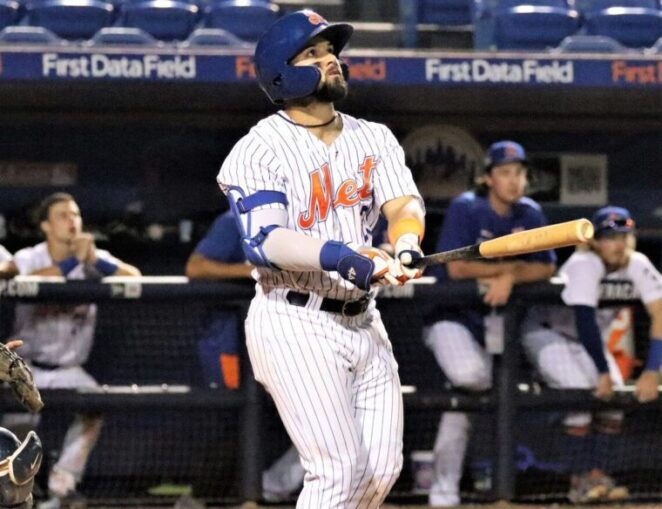
Carlos Cortes. Photo by Ed Delany
The scouting report on Cortes is that he is a fantastic fastball hitter and is much weaker against breaking balls. Typically, drastic splits like his are easily identified by opposing pitching staffs, making his improved chase rates all the more important. He’s a great high ball hitter and also pulls the ball well, indicating quick bat speed and a good point of contact. His flatter swing and high ball hitting is why he is able to hit double-digit round trippers even with a more contact oriented approach.
His hot zones at the plate are specifically inside, even off the plate inside, and high and in and his cold zones are away. An easy adjustment he could make would be to crowd the plate more to get those hot zones more in the strike zone, also eliminating any in-zone cold zones.
His platoon splits are also incredibly neutral making him a potential everyday outfielder if he continues to improve. Small adjustments like his stance positioning strategy and larger long-term changes such as a few miles an hour of bat speed and exit velocity could put him in the conversation for being everyday outfield depth and warranting a spot on the 40-man roster.




